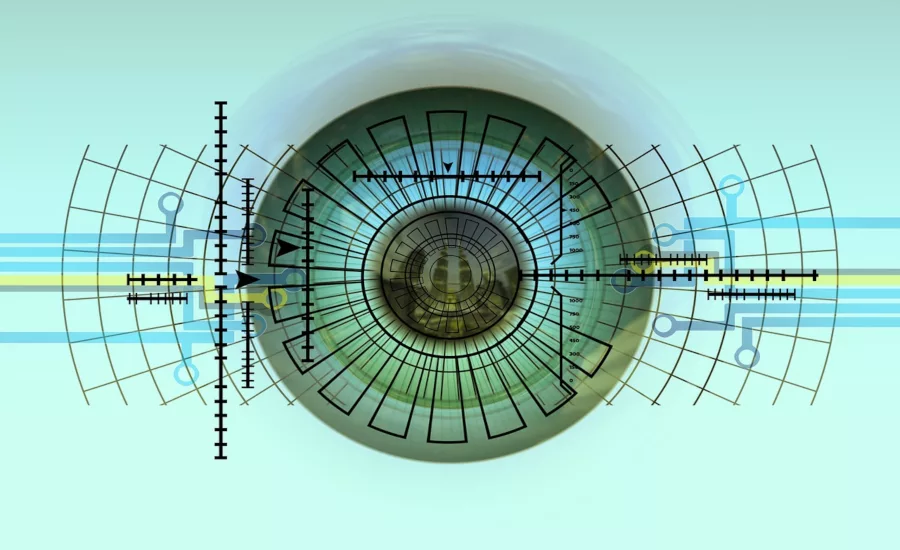In the Age of Facial Recognition, The Human Element is Still Necessary



Jeff Spivey, CRISC, CPP, PSP | CEO, Security Risk Management, Inc.

Keith Oringer, Founder and President |Security ProAdvisors

Jack Goldsborough, Principal Consultant | Whitehaven Advisors LLC
With San Francisco banning the use of facial recognition technologies for their local agencies, the debate on the efficacy of the technology has risen back into the national debate arena. While many law enforcement agencies still utilize facial recognition, there are several detractors that state it has a bias factor that cannot be ignored. This begs the question, “what is the right way to leverage technology such as this within the security industry?”
Not a Perfect Mousetrap
It should be noted that the new law in San Francisco only applies to local agencies and doesn’t include private security. The concern that led to the decision is that the while technology is fairly good at identifying white male faces, it often misidentifies people of color and woman. This leads to a disproportionate statistic of people being held for questioning that potentially are not a threat. This bias is what led many to call for the ban, citing discrimination based on AI inefficiencies.
AI and the facial recognition technologies that rely on it can prove a valuable resource, but it is still in its relative infancy. As the technology continues to evolve, advancements are continually made, and it is a lucrative field for investors. But in its current state, it is not a perfect mousetrap. Proponent of the ban cite that the use of facial recognition with these biases can fuel social divides among race and gender lines, and until there is regulation and improvement, the technology is not yet ready for use in law enforcement.
Regulations Need to Catch Up with Technology
This isn’t the first time technology has outpaced regulations. With the advent of biometric technology, there was a similar challenge to how and when this information can be used, especially in the private sector. Illinois, Texas and Washington (with Florida considering it) have adopted the Biometric Information Private Act (BIPA), which seeks to protect an individual’s biometric data. Some of the highlights include:
- Private entities collecting biometric identifiers or biometric information must have a written policy, made publicly available, that sets a retention schedule for destroying such information when the initial purpose of collection has been satisfied or within three years of the individual’s last interaction with the private entity, whichever occurs first.
- When an individual’s biometric identifier or biometric information is first collected, the individual must: be informed that the biometric data is being collected, be told of the “purpose and length of term” of the biometric data collection and provide a written release.
- Biometric data can’t be sold, and it can’t be disclosed unless the individual concerned consents to the disclosure (or certain other exceptional circumstances apply – e.g., required by law).
If Facial Recognition is being used as a form of biometric ID of employees, visitors, vendors, etc. for access control purposes, then there is a need to identify disclaimers and/or consent of the use of the technology. The same may go for the use of facial recognition as part of a surveillance detection functions of the physical security program - which in today's litigious environment also requires disclosures and disclaimers.
So, it is likely that regulations will eventually make its way into the private sector with respect to facial recognition. Time will tell, and while the debate continues, we will continue to see technology introduced to the market.
What is the Impact on Physical Security?
There is no restriction on facial recognition technology in the private sector today, and the future of this technology remains very much in the industry as a tool for mitigating potential threats. However, there is some level of concern on relying on technology alone to completely eliminate risk in private security. Companies that leverage the technology have to weigh their options when considering whether to implement new elements into their overall security management portfolio.
Much like any new technology, whether it is drones, robots, biometrics or mobile solutions, the decision to implement needs to factor in the whole picture. How much will physical security firms rely on tech versus manned guards?
Security professionals were surveyed ranging from 5 to over 10,000 guards and found that the majority, if they could implement it, would welcome the idea as a benefit to augmenting their current operation.
The Experts Weigh in
So, what do some of the experts say? They were asked for their opinion on facial recognition in security:
Jeff Spivey, CRISC, CPP, PSP | CEO, Security Risk Management, Inc.
Facial recognition is a subset of artificial intelligence and both will bring more clarity to physical security problems over the next 6 months to 5 years. Facial recognition provides a tool that is able to perform what was before human assessment and recognition of faces/people... to a more automated and rapid indicator for the security professional.
In general, artificial intelligence will begin to understand not only faces but people's movements unusual behavior and report that insight to the physical security professional for additional follow up where a human is needed for more complete analysis in this position.
Jack Goldsborough, Principal Consultant | Whitehaven Advisors LLC
In the end however, despite rapidly developing technologies and their transformative effects on the security industry such as FR, robotics, AI and potentially 5G communications, the physical security component will likely always have a human element playing a proactive or reactive role in each of the five stages of asset protection: deterrence, detection, response, intervention and loss mitigation.
Looking forward, we see the traditional guard service business continuing its convergence with legacy integrated systems while still learning how to adopt these newer capabilities into its offering mix for a more effective service package and value proposition for its clients. This paradigm shift will slowly evolve into a platform of managed services in which the lower-skilled guard force will be gradually replaced with fewer but more highly skilled security agents, operators and technicians. With the re-design of their responsibilities and duties to harness these technologies into their expanded on-site roles, the overall benefit to the client organization with be a lower, more productive security spend. In turn, while the contract guard company adopting this strategy will undoubtedly realize lower billable hours and revenues, it should yield higher margins, EBITDA and thus, market value.
Keith Oringer, Founder and President |Security ProAdvisors
Technology is never going to replace people, and facial recognition, while a compelling technology offering, needs to tie hand-in-hand with skilled people. The roles may evolve; whereas you had two officers working a post, now you may have one officer working the post, and another as a technician. So, while you may see new security technologies that augment operations, you will never see the human element go away – the sheer presence of a human security officer in itself is a deterrent.
Physical Security Will always need the Human Element
This brings us to the crux of the issue. Whether it is specifically facial recognition, or any technology for that matter, the necessity of a physical guard force in security will always be a constant. Having a physical presence that will man a post, tour a facility and interact with visitors and clients is a key assurance for most companies hiring security firms. In most cases, the mere presence of a security guard is considered a threat deterrent; without it, there is a potential higher impact of incidents as opposed to the “eye in the sky” approach to security.
When weighing the impact of any new technology, whether it is AI, Drones, Mobile or Robots, guard firms must ask:
- Will the technology augment the operation? If there is a deficiency in the operation or process, will the technology effectively alleviate these deficiencies?
- Will the technology integrate seamlessly to operations? This isn’t just a technology integration, but one of guard integration. Will there be a burden on training, effective use, and overall user experience? If the technology becomes too difficult to integrate into regular operations, then it may prove inefficient.
- Does the technology require specialization? Some technologies such as facial recognition may require a specialized technician that can administer the system and take effective action. This is another resource that would need to be added to the workforce. Companies looking to mitigate risk through technology will need to understand the impact on new hires who can run the system.
- Is the technology secure? Like any new technology, the threat of hacking or disruption of service will always be present. In the case of Facial Recognition, what is the likelihood of it being used (and potentially hacked) on smartphones and in social media? This is especially tricky when employers allow the use of the employee's cellphones to be used for the Company's business purposes.
- Is the Technology an Expected Requirement? Often times, advancements in technology come from customer demand. In the case of the Security Guard industry, this would be the needs of the clients. Are the clients expecting a level of technology incorporated into the operation? A good example is Mobile Technology – clients expect a security firms to have a workforce management system that incorporates mobile technology, touring, and visibility into how guards are working a post. This demand brought mobile to the forefront of the industry.
Technology’s Impact on The Security Guard Industry
The current expectation is that more and more cities will follow San Francisco’s lead and begin to ban facial recognition in local agencies, until there is more reliability and regulation in place. In fact, Oakland is considering a similar ban, and Massachusetts has introduced a bill to ban the technology as well. While this proves to be a new challenge in the public sector, the impact on the private sector remains to be seen. Most guard firms are not leveraging this technology, since it is still in the early stages of development and not yet a cost-effective resource to implement.
Much like any technology, guard firms need to carefully review their current operations and whether introducing new technology will augment the operation, introduce more costs, or require new resources to implement. Furthermore, the needs of the client continue to drive the expectation, and while some technologies are expected in the current state of the industry, facial recognition is still widely considered “emerging” in the eyes of the consumer.
In the end, technology will never completely eliminate the Human element within physical security. Companies need to determine whether introducing new platforms and systems will improve the operation, detract from the operation, or create a better overall experience for the client.
Looking for a reprint of this article?
From high-res PDFs to custom plaques, order your copy today!








